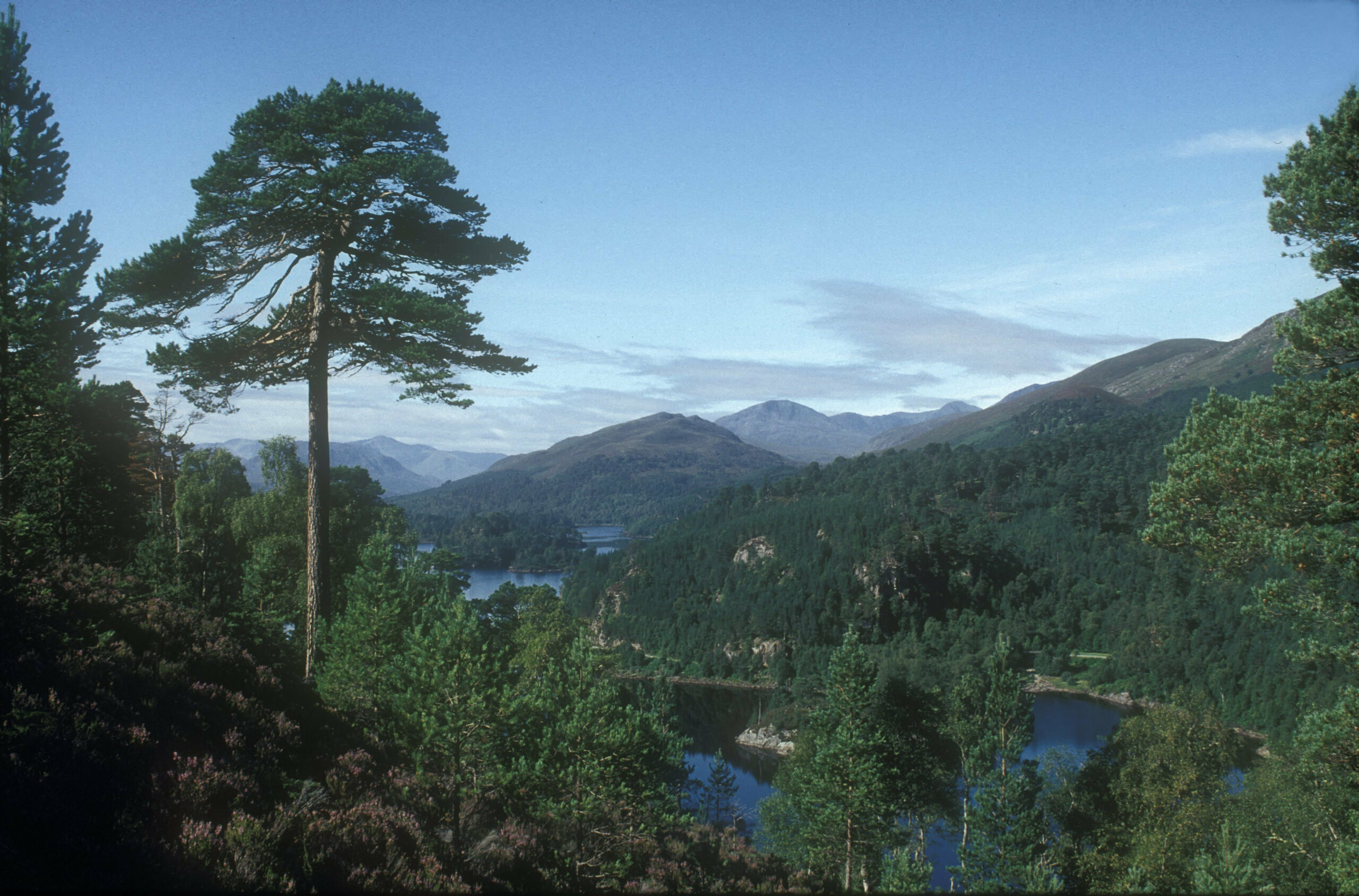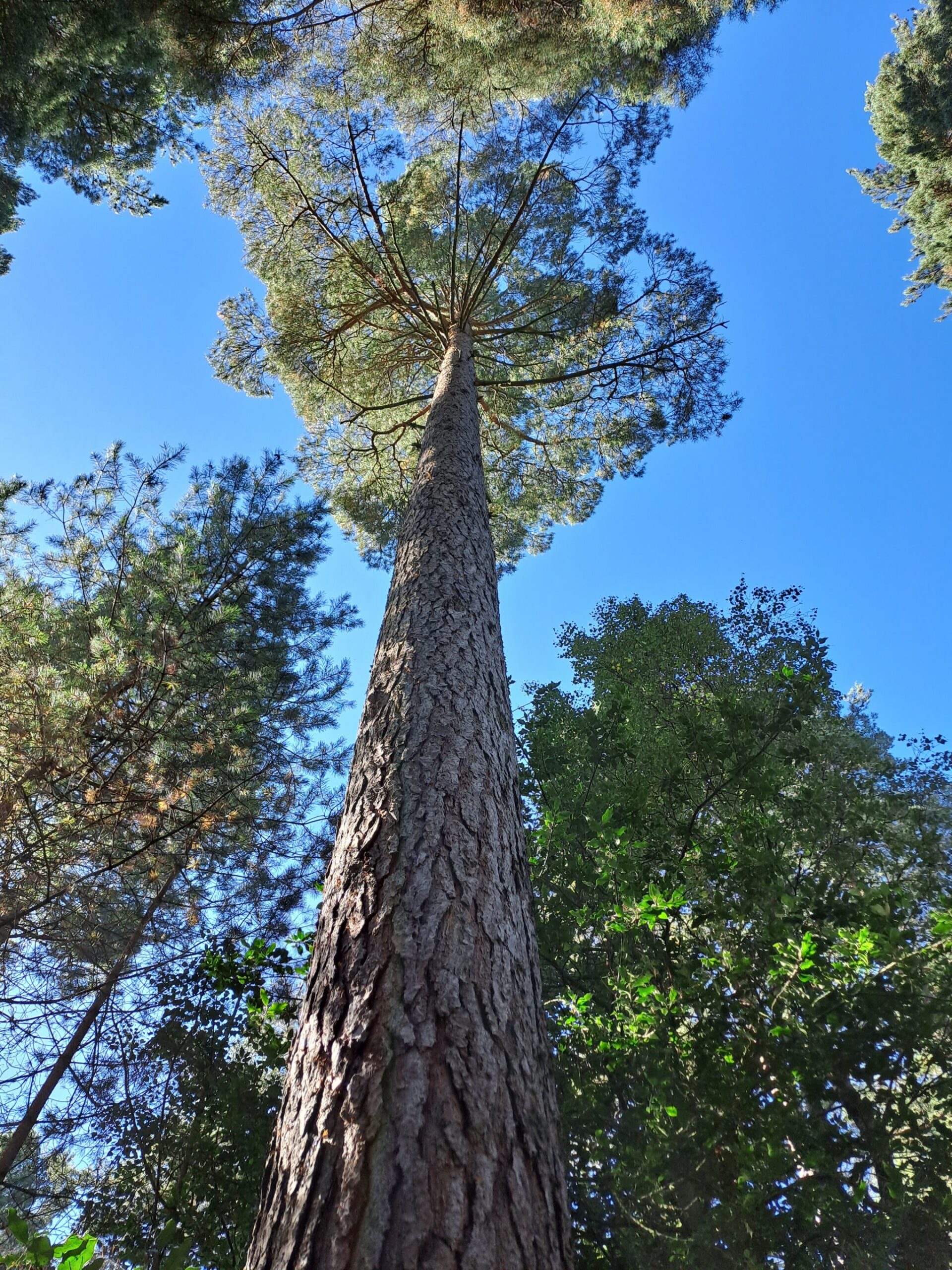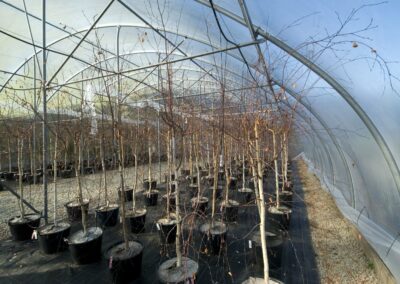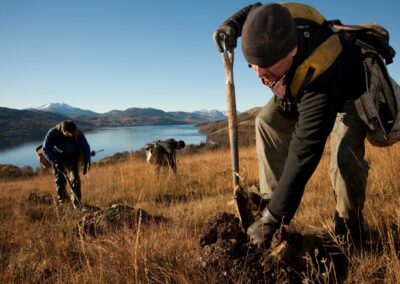Infusing resilience into the Scots pine genetic resource
Project leads Dr Richard Whittet | Forest Research; Dr Annika Perry | UK Centre for Ecology and Hydrology
Lead organisation Forest Research
Project status Active
Project funding 25-26 £81,195
Research outcomes Reducing the risk | Adaptation | Recovery
Context
Forestry is seeking to develop secondary species to diversify the mix of species planted in British forests. Tree breeding can help to make the cost of diversification more bearable.
Scots pine (Pinus sylvestris) is a good candidate for tree breeding as there has already been a large breeding programme in the 20th century because:
- Demand for seedlings is large and growing
- There is clear room for improvement
- It has been shown to socially and economically justifiable.
We are reopening the national Scots pine breeding programme by bringing together multiple sources of material into a genetic field-testing campaign. We have updated our breeding objectives to include resilience to both biotic and abiotic stress.
Research aims and objectives
Aim:
Infuse resilience into the Scots pine genetic resource.
Objectives:
- Plant new Scots pine progeny trials in 2028 in up to five locations in GB
- Plant a new quality-assured breeding arboretum, to store DNA-verified selected parents
- Improve understanding of, and our ability to assess, Scots pine responses to Dothistroma needle blight (Dothistroma septosporum) by exploring how variation in needle morphology and spectral signatures relates to field observations
- Explore how Scots pine responds to compound stress e.g. drought and waterlogging (another of our projects is also looking into drought and waterlogging stress response, see here for more information: Investigating Scots pine resilience).
Expected outcomes
- Up to five new Scots pine progeny trials.
- A quality-assured breeding arboretum containing verified copies of selected parents.
- New methods to use when assessing the trials in future.
Further resources linked to this project
CFP Phase 1 Project (2022-2025)
See previous research on this topic from CFP Phase 1 project: Infusing Dothistroma needle blight resilience into the Scots pine breeding population.
CFP Intern - Jessica (2025-2026)
Find out how intern Jessica is supporting this project throughout her sixth-month Centre for Forest Protection internship (Oct 25 – Mar 26):
Jessica – Supporting the re-establishment of the Scots pine breeding programme
Title image: Crown Copyright. Forest Research – George Gate
Body image: Crown Copyright. Forest Research – Dr Richard Whittet
Glossary & Key Terms
Abiotic stress
Stress caused by physical and environmental factors.
Biotic stress
Stress caused by living organisms such as bacteria, viruses, fungi and insects.
Dothistroma needle blight (Dothistroma septosporum)
Dothistroma needle blight (DNB) is an economically important disease of conifer trees (trees with cones and needles), and particularly pines (trees in the Pinus genus). It is caused by the fungus Dothistroma septosporum. It causes premature needle defoliation, resulting in loss of timber yield and, in severe cases, tree death. For more information, see Dothistroma needle blight (Dothistroma septosporum).
Needle morphology
The physical characteristics and structural traits of tree needles, such as their length, width, shape, and surface features, which may influence the tree’s resilience to environmental stressors and diseases.
Progeny
A descendent or offspring.
Scots pine (Pinus sylvestris)
Scots pine is one of three native conifers but is the only one of commercial importance. It is tolerant of dry conditions which makes this an increasingly valuable species for sites in eastern Britain where drought risk is likely to increase under climate change. Scots pine is categorised as a principal tree species. For more information, see Scots pine (SP) – Forest Research
Spectral signatures
The unique patterns of electromagnetic radiation (light) that an object or material reflects or emits across different wavelengths.
Share this project on social media
Related Projects
Our Partners
Social media
Explore
Newsletter
Contact
© 2022 Centre for Forest Protection. All rights reserved.



